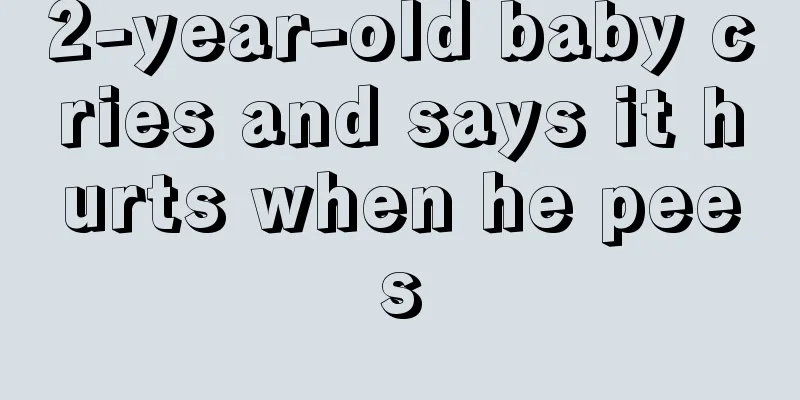What should I do if my child has cervical dislocation?

|
Children's bodies are still in the process of development, so their bones are still very fragile. The cervical vertebra is also the main support for our body. We usually rely on the cervical vertebra to carry out activities such as standing, sitting and lying. Children may accidentally dislocate their cervical vertebrae, which makes adults very anxious. So what should we do if a child has a dislocated cervical vertebra? How to treat it? The following editor will share with you the knowledge in this regard. Through the mutual balance between traction and counter-traction, the head and neck are relatively fixed in the physiological curve state, so that the phenomenon of abnormal cervical curve is gradually changed. However, its therapeutic effect is limited and it is only suitable for patients with mild radiculopathy of cervical spondylosis. In the acute phase, traction is prohibited to prevent worsening of local inflammation and edema. It is currently recommended to first go to a larger local hospital to see a neurology doctor, and then see a spinal orthopedic doctor. Dislocation of the cervical vertebrae can compress the nerves and cause the manifestation of strabismus. Seeing that the child is currently suffering from severe calcium deficiency, it is not suitable for cervical vertebrae reduction. The current task is to first find out the root cause of the severe calcium deficiency. As long as there is no severe malnutrition, is there any other disease causing the severe calcium deficiency? Secondly, actively supplement calcium and take good care of the neck to prevent the dislocation from getting worse. When the time is right, perform manual reduction. When children have a cold, it is important to avoid external force on the cervical vertebrae. An ordinary cold in children may be a small problem, but at this time, the cervical vertebrae encountering external force may cause a big problem. "President Yin Qingshui repeatedly emphasized that once a child has a throat infection or edema, it is important to avoid external force on the cervical vertebrae. Under normal circumstances, twisting or pulling the head and neck may not cause any problems. However, when inflammation and edema occur locally in the throat, the soft tissue around the child's atlas and axis is particularly loose. At this time, as long as the normal range of motion is exceeded or the child is in an abnormal torticollis posture for a long time, atlantoaxial rotational subluxation may easily occur. Therefore, when children have a fever or a cold, they must avoid strenuous exercise, such as somersaults, and games and fighting should also be done in moderation. Once atlantoaxial dislocation occurs, standardized diagnosis and treatment should be given, otherwise it can easily lead to paralysis. To sum up, spinal misalignment in children is indeed a serious disease. Remember to keep your back, neck and other parts of your spine warm and don't let them get cold. Also, children should not be allowed to do strenuous exercise when they have a cold or fever to prevent spinal dislocation. Spinal misalignment may lead to paralysis. For example, misalignment of the atlantoaxial joint can cause paralysis in children. |
<<: What are the symptoms of wind-heat and wind-cold colds in children?
>>: What to do with children's knee pain?
Recommend
Can children be circumcised?
The foreskin is the protective layer of the male ...
What is the development standard for a two and a half month old baby?
After the baby is born, the family will become wa...
Treatment for heavy breathing in babies
I don't know if any of us have ever encounter...
Children's learning disabilities
The problem of children's learning disabiliti...
How long does it take for baby conjunctivitis to heal?
Conjunctivitis is not unfamiliar to many people. ...
The causes and clinical manifestations of children's phobias
What is childhood phobia? Many of our children ar...
Children have cold hands and feet
We all know that when babies are young, they are ...
What should children eat to grow taller?
In daily life, we often hear many mothers complai...
How to treat snoring in children?
I believe that most men have snored. It seems tha...
Baby always puts his hands in his mouth
Parenting experts told us that if a baby always p...
Pay attention to the eight "leaps" in baby's intelligence
The first time is around the 5th week, when the b...
Reasons why children have restless sleep
Parents are very concerned about their children&#...
What to do with baby diaper rash? Give your baby more scientific care
If babies are not properly cared for, diaper rash...
Children's finger and toe nails itching
Children usually like to chew their fingers in th...
What is the cause of neonatal hemangioma?
Hemangioma is a common benign tumor of the skin b...









